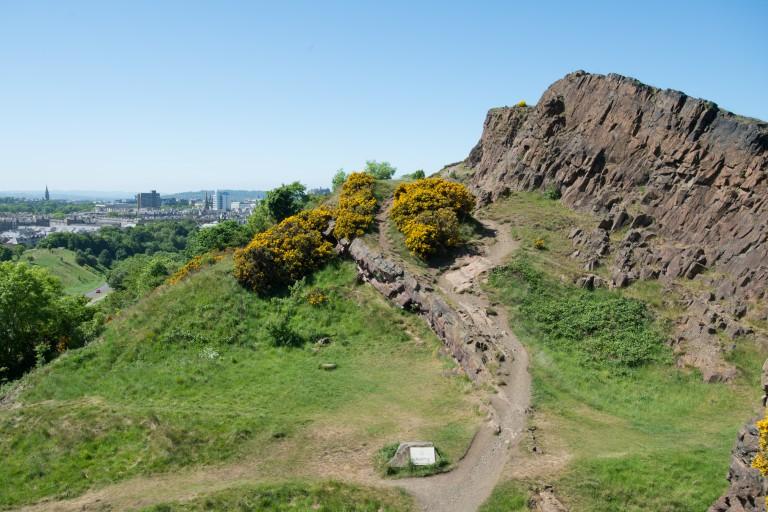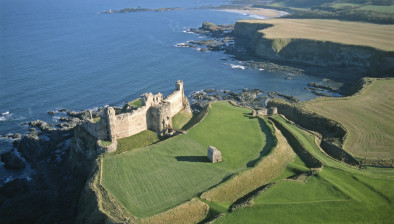And finally… New digital models of Salisbury Crags Hutton Section and Hutton’s Rock
The ancient meets the modern with the launch today of two new digital 3D models highlighting the ‘Hutton Section’ and ‘Hutton’s Rock’ at Salisbury Crags in Edinburgh’s Holyrood Park.

Crags Hutton Section
Devised by Historic Environment Scotland (HES) in partnership with Nature Scot, the new virtual models are available to view online via the 3D modeling platform Sketchfab, and provide a unique, immersive exploration of the areas, as well as a wealth of historical facts about the sites named after the “father of modern geology” James Hutton, following his defining study of the crags in the 1800s.
Comprising a series of cliffs adjacent to the park’s Radical Road and boasting thousands of years of history and archaeology, Salisbury Crags, and its adjoining Hutton Section, were formed millions of years ago by rising magma forced under pressure between layers of sedimentary rock below the now dormant Arthur’s Seat volcano. This then cooled to form a near horizontal sheet-like body, or sill, of igneous rock called Dolerite. While the Hutton Section and Hutton’s Rock are temporarily closed to the public due to rockfall issues which HES is currently addressing, there are plans to start risk assessed, protective equipment (PPE) covered park ranger led educational visits for students and educational groups over the next few months.
Providing a visually stunning, virtual perspective of the Hutton Section and Hutton’s Rock, the new 3D models were created through a process of laser scanning, using ultra-fast, high-resolution laser scanners to capture 3D spatial data in the form of a point cloud. To create a photorealistic model, hundreds of overlapping images of the site are then combined with the 3D data, in a technique known as photogrammetry.
As well as aiding future conservation work at sites such as Holyrood Park and supporting HES’s wider interpretation and education programmes, the 3D data created is also becoming increasingly important in providing virtual access to places and buildings in the heritage body’s care.
Commenting on the new 3D models, Dr Lyn Wilson, head of programme for technical research and science at HES, said: “We care for over 300 historic properties and sites, and it is our aim to use a range of digital technologies to capture accurate, highly detailed 3D information to both support our wider work in monitoring and maintaining our sites, and to offer additional, innovation experiences via virtual access to our sites and places.
“These latest Sketchfab 3D models are notable examples of that approach in action, not only helping with our crucial conservation work but in allowing new audiences to enjoy and increase their understanding of iconic areas like the Hutton’s Section and Hutton’s Rock within Holyrood Park.”
Dr Colin MacFadyen at Nature Scot, who HES partnered in the development of the Sketchfab models to provide accurate geological information for the captions, said: “It has been a privilege to work with HES on this exciting and innovative project. Salisbury Crags is a Scottish Geo heritage asset of major global significance where James Hutton gathered evidence for his Theory of the Earth. For those not able to visit Holyrood Park the digital models of “Hutton Section” and “Hutton’s Rock” will provide useful interaction with these famous geosites. They have considerable educational value and will act as a taster for Geo tourists from across the world planning to experience the locations at first hand.”























